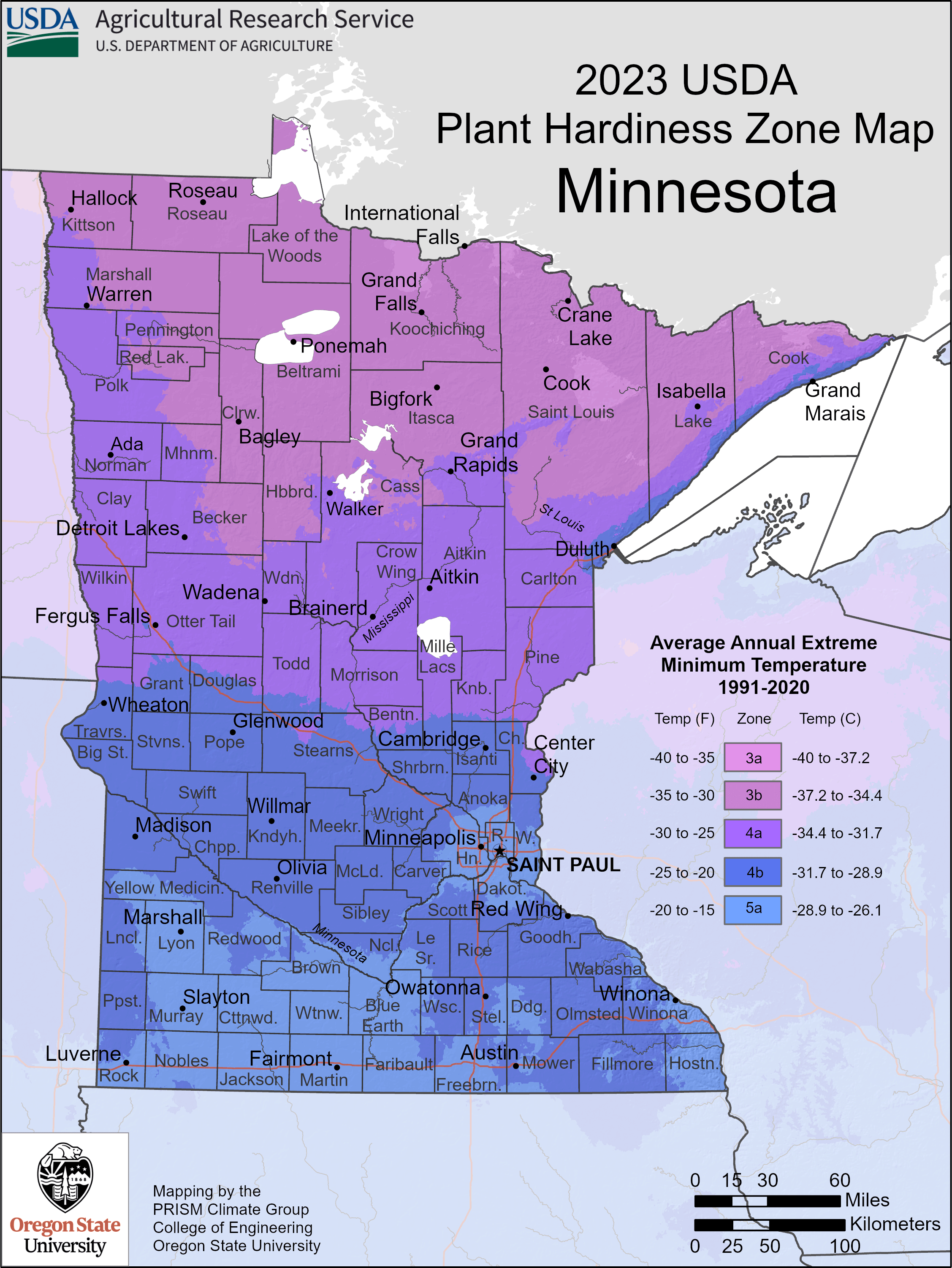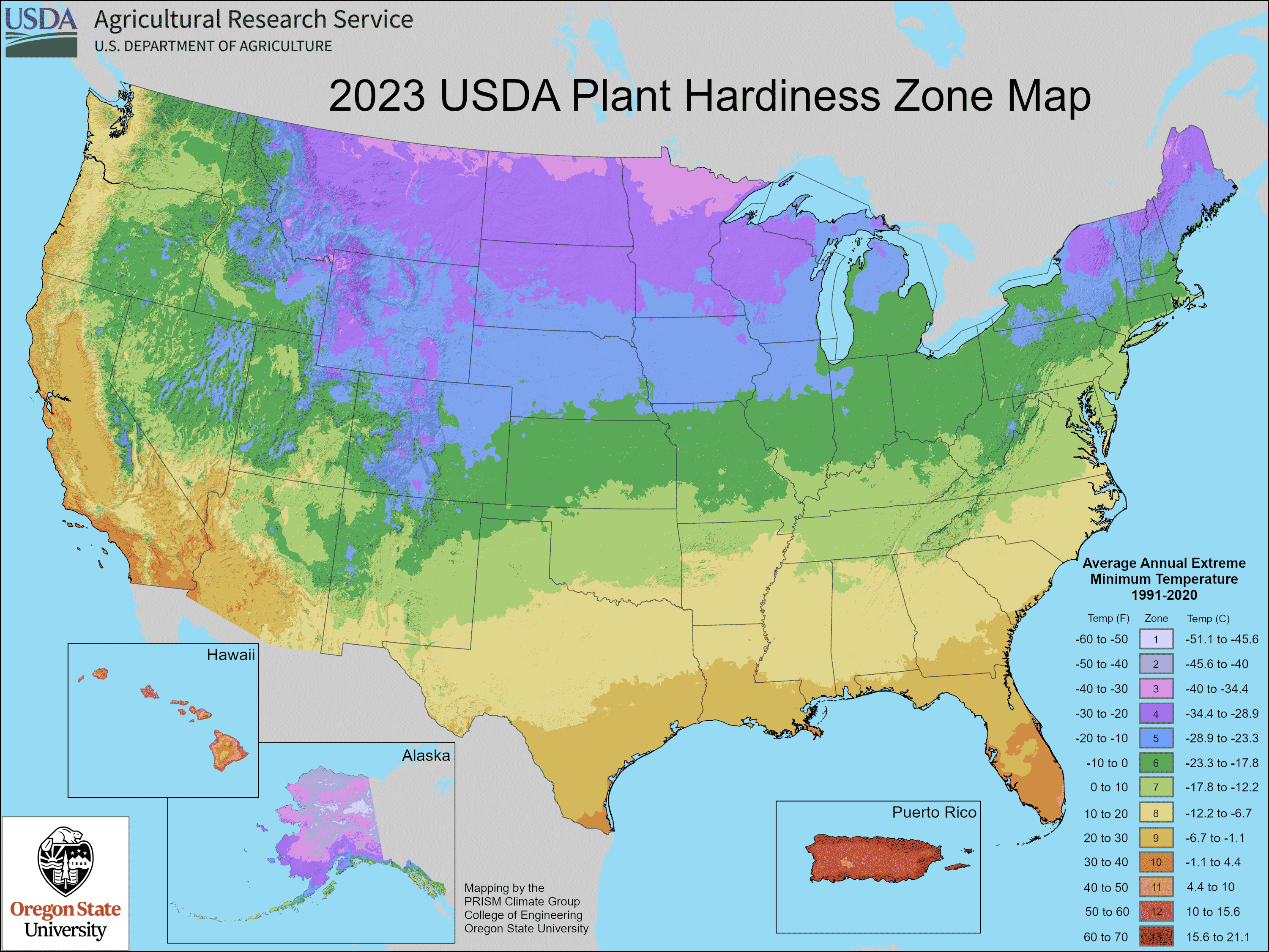Plant Hardiness Zone Map
The USDA Plant Hardiness Zone Map is the standard by which gardeners and growers can determine which perennial plants are most likely to thrive at a location. The map is based on the average annual extreme minimum winter temperature, displayed as 10-degree F zones and 5-degree F half zones. Growers and gardeners in Minnesota are gardening in zones 3, 4 or 5.

How are the zone numbers and colors interpreted? What do they mean?
The Plant Hardiness Zone Map (PHZM) is based on the average annual extreme minimum winter temperature, displayed as 10-degree F zones ranging from zone 1 (coldest) to zone 13 (warmest). Each zone is divided into half zones designated as ‘a’ and ‘b’. For example, 7a and 7b are 5-degree F increments representing the colder and warmer halves of zone 7, respectively. Zone numbers are typically listed with the descriptions of perennial plants in catalogs and other sales information produced by commercial nurseries, plant suppliers, etc.
How should I use the map when growing plants?
All Plant Hardiness Zone Maps (PHZM) should serve as general guides for growing perennial plants. They are based on the average lowest temperatures, not the lowest ever. Zones in this edition of the USDA PHZM are based on 1991-2020 weather data. This does not represent the coldest it has ever been or ever will be in an area, but it simply is the average lowest winter temperatures for a given location for this 30-year span (1991-2020).
Consequently, growing plants at the extreme range of the coldest zone where they are adapted means that they could experience a year with a rare, extreme cold snap that lasts just a day or two, and plants that have thrived happily for several years could be lost. Gardeners need to keep that in mind and understand that past weather records cannot provide a guaranteed forecast for future variations in weather. They should consult with other knowledgeable producers and gardeners with extensive expertise with conditions at their locales. Furthermore, gardeners should recognize that many other environmental factors, in addition to hardiness zones, contribute to the success or failure of plants. Wind, soil type, soil moisture, humidity, pollution, snow, and winter sunshine can greatly affect the survival of plants. Warm season heat and moisture balance are particularly important in this regard. The way plants are placed in the landscape, how they are planted, and their size and health can also influence their survival.
• Light: To thrive, plants need to be planted where they will receive the proper amount of light. For example, plants that require partial shade that are at the limits of hardiness in your area might be injured by too much sun during the winter because it might cause rapid changes in the plant’s internal temperature.
• Soil moisture: Plants have different requirements for soil moisture, and this might vary seasonally. Plants that might otherwise be hardy in your zone might be injured if soil moisture is too dry in late autumn, and they enter dormancy while suffering moisture stress.
• Temperature: Plants grow best within a range of optimal temperatures, both cold and hot. That range may be wide for some varieties and species but narrow for others.
• Duration of exposure to cold: Many plants that can survive a short period of exposure to cold may not tolerate longer periods of cold weather.
• Humidity: High relative humidity limits cold damage by reducing moisture loss from leaves, branches, and buds. Cold injury can be more severe if the humidity is low, especially for evergreens.


